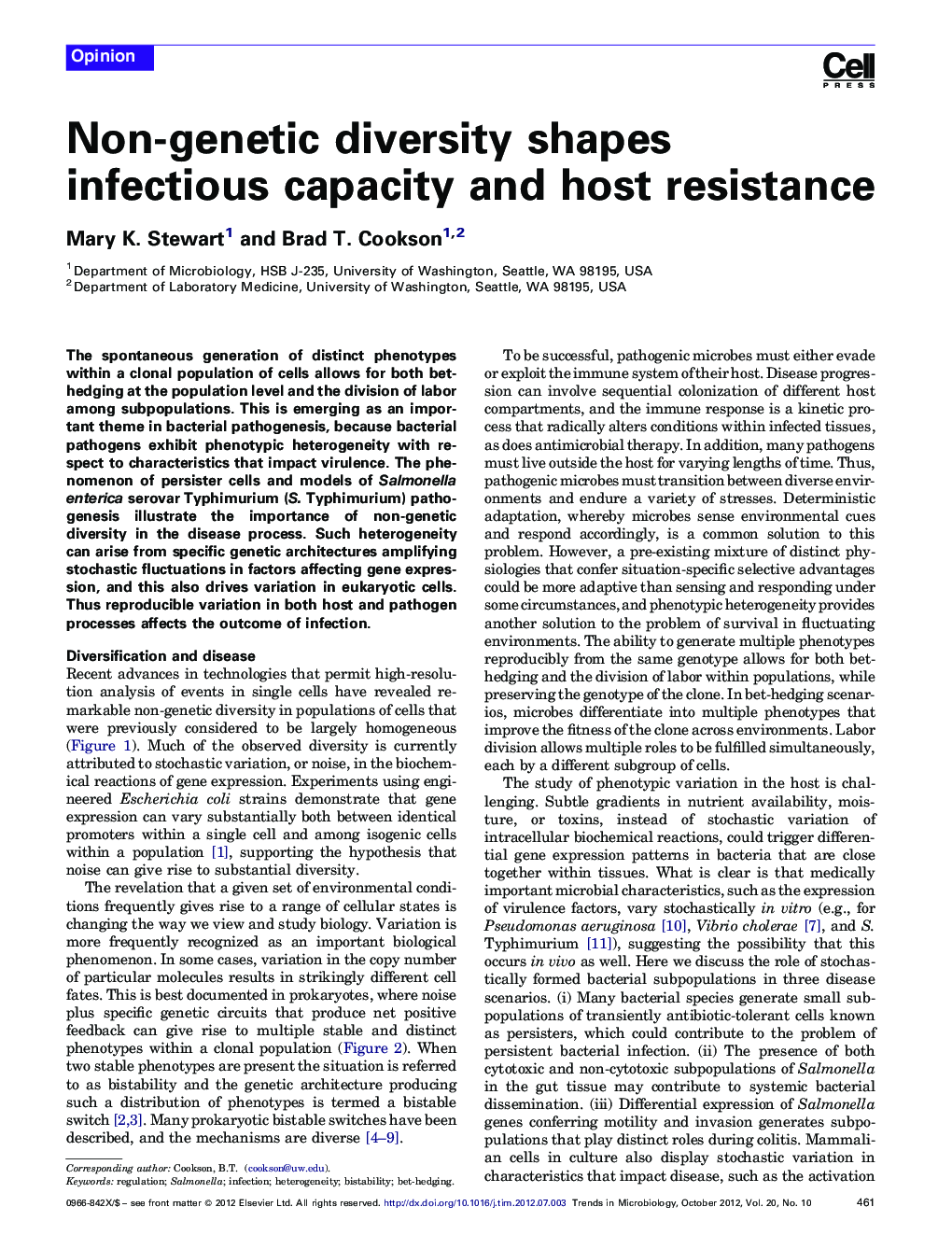| Article ID | Journal | Published Year | Pages | File Type |
|---|---|---|---|---|
| 3421987 | Trends in Microbiology | 2012 | 6 Pages |
The spontaneous generation of distinct phenotypes within a clonal population of cells allows for both bet-hedging at the population level and the division of labor among subpopulations. This is emerging as an important theme in bacterial pathogenesis, because bacterial pathogens exhibit phenotypic heterogeneity with respect to characteristics that impact virulence. The phenomenon of persister cells and models of Salmonella enterica serovar Typhimurium (S. Typhimurium) pathogenesis illustrate the importance of non-genetic diversity in the disease process. Such heterogeneity can arise from specific genetic architectures amplifying stochastic fluctuations in factors affecting gene expression, and this also drives variation in eukaryotic cells. Thus reproducible variation in both host and pathogen processes affects the outcome of infection.
